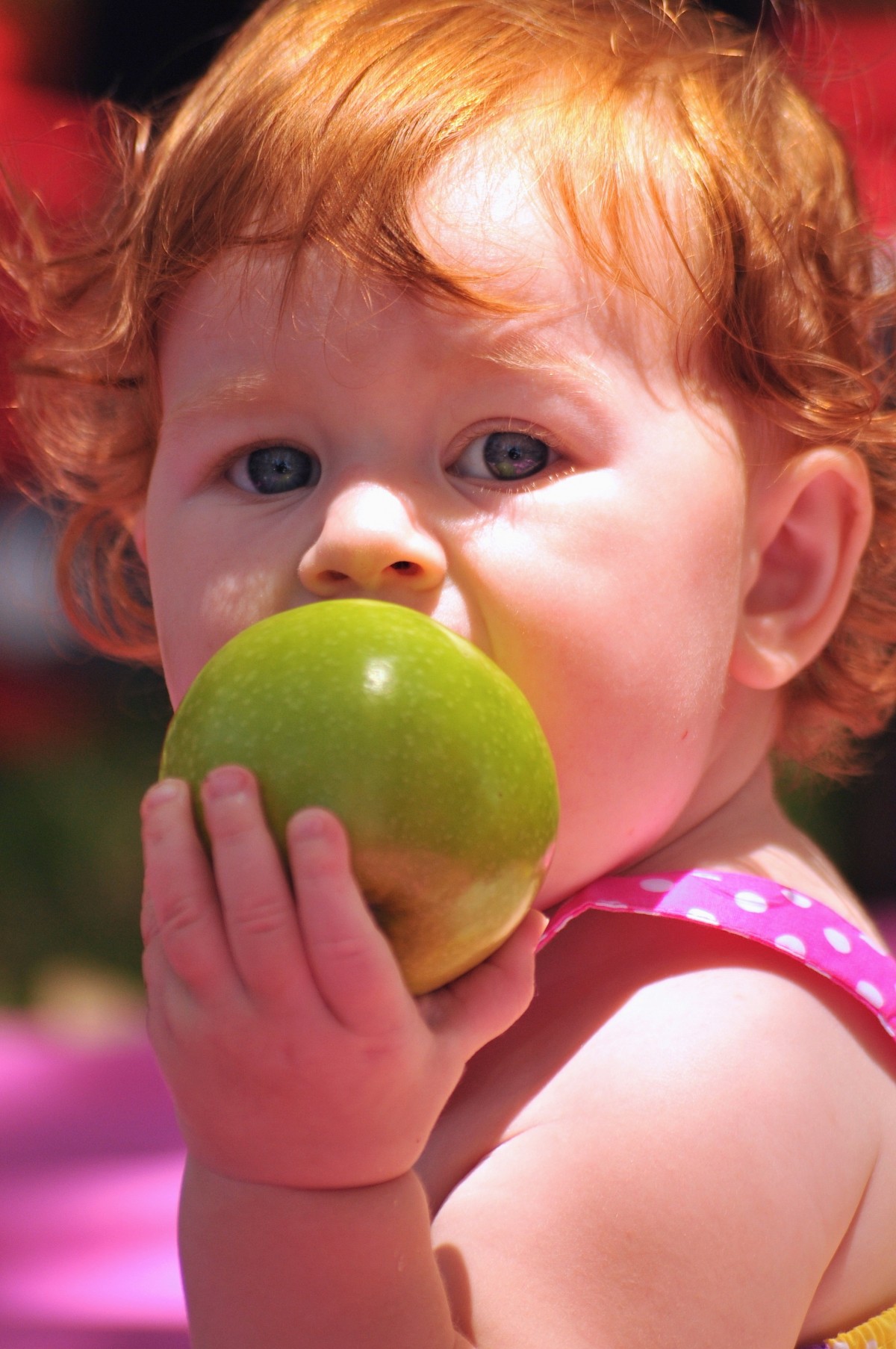
How to Diversify Your Baby’s Diet
How to Diversify Your Baby’s Diet
Between 5 and 7 months, most children are ready to eat new foods because their kidneys and gut are sufficiently mature. Let’s take a look at each stage of food diversification.
Stages of food diversification
Up to 6 months
The World Health Organization (WHO) recommends exclusive breastfeeding for the first 6 months of a child’s life, even if possible for the first two years while supplementing his diet with balanced meals. It is recommended to breastfeed at least 3 times a day until the age of 1 year to ensure that the baby receives a sufficient dose of milk.
From 6 months of age

Don’t force your little one to eat. Make this period a time of pleasure and relationship. Gradually introduce your child to the great multitude of flavors, colors, smells, textures, and scents, with curiosity and laughter, and above all, with a certain distance from the often contradictory media injunctions. According to your culture, philosophy of life, and ethics, take what you think is suitable for your child from this post. It is only a guideline with some basic reference points.
Good to know: there is also child-led diversification: in this case, the baby is not spoon-fed and chooses his solid foods.
To start introducing new foods, your baby must be healthy; otherwise, take the time to wait until he or she is well.
Note: During the first year, don’t give your baby salt (to avoid overloading his kidneys), sugar or spices.
Add only one new food per week without mixing it with the food he already knows.
– Give him a spoonful of a cooked vegetable reduced to a very fine purée, easy to digest: carrot, fennel, or zucchini, for example.
– Wait a few days.
– Then, give a few more spoonfuls.
– Start with vegetables, and continue with fruit (apples are easy to digest).
– Breastfeed your baby or give him a bottle after the puree.
– Gradually increase the amount of puree and decrease the amount of milk.
Note: Adding only one kind of vegetable or fruit will help you know whether your baby can tolerate it. Rash, vomiting, diarrhea, and constipation are signs of food intolerance.
When your child no longer drinks milk, offer water or herbal tea, such as fennel tea (fennel is very digestible).
From 9 months of age
From 9 months onwards, your child eats at the family table:
– The puree can be less fine. You can mash the vegetable or fruit with a fork, and a little later, cut small pieces that are not hard, suitable for his little hands.
– Once a week, add a little egg yolk or organic cereal, spelt being the most digestible and nutritious cereal.
– If your baby is already teething, offer chewable foods: a little chicken, for example.
After 1 year
Your child can eat lightly spiced and salted foods (with iodized whole sea salt).
Food diversification: some tips
Your child’s diet will impact the rest of his life. A good eating pattern from an early age gives them a lifelong advantage.
What to do
Experts advise offering a new food often (up to 10 times): “a baby may need time to appreciate it”, but not to force a child to eat. In addition, it is necessary to “trust the child’s appetite” and to be attentive to signs of satiation.
Finally, the meal environment is important. In particular, avoid the presence of screens.
Introduction of cooked cereals
Cooked cereals such as spelt, rice, millet, and quinoa, rich in iron, are suitable for babies’ digestion.
– Cereals are finely ground and then cooked.
– Give 2 teaspoons mixed with vegetables if your child tolerates it well.
Introduction of almond puree, then sesame, then cashews
You can give a teaspoon of almond puree, as it contains a lot of protein, unsaturated acids, and calcium.
The amount can be gradually increased up to a level tablespoon.
Then, you can replace 1/3 of the almond puree with sesame puree, which contains twice as much calcium, iron, and polyunsaturated fatty acids (but is a bit bitter).
Foods to avoid
Avoid certain foods that are not easily digestible during the first year:
– onions and garlic;
– leeks, peppers, beans, spinach
– lettuce and cabbage;
– citrus fruits;
– hazelnuts, nuts;
– red meat and cold cuts;
– egg white (its albumin is a possible allergen)
– margarine;
– roasted, fried, and grilled foods;
Do not heat oils.
Good to know: choose cereals that are low in gluten because of the risk of intolerance in the intestine (celiac disease).
Example of a meal for a child from 12 to 18 months
Here is an example of a healthy and balanced meal for a child from 12 to 18 months:
– for a breastfed child:
◦ breastfeeding,
◦ spelt grain petals,
◦ fennel puree;
– for a non-breastfed child:
◦ cereal or patty,
◦ zucchini and pumpkin puree with a teaspoon of rapeseed oil,
◦ a protein: yogurt, sheep cheese, or chicken,
◦ a compote.
Note: for snack, give a breastfeed. If you are not breastfeeding, give your child a milk product (almond milk or sheep’s yogurt) and a patty, possibly with seasonal fruit.
Precautions to take with food diversification
Preparing fruits and vegetables
Always wash fruits and vegetables.
Peel them because a baby has difficulty swallowing badly mixed pieces.
Steam them gently, cut them into pieces, or cook them in a closed pan with little water.
Note: avoid bananas at evening meals as they are hard to digest.
Preparing meat
20 g of meat twice a week is enough to cover a baby’s needs:
– Boil mutton and poultry meat in plenty of unsalted water or steam gently.
– Discard the water.
– Blend the meat.
Note: If your child does not like meat or if you are a vegetarian, you can use egg yolk instead.
Good to know: too much meat, and therefore too much protein, is not good for your health.
Dairy products
It is advisable to limit the consumption of yogurt and cow’s milk, which contain too much sugar, calcium, and growth factors that are dangerous for the individual.
There are now vegetable milks and dairy products of good nutritional quality for children: chestnut, spelt, almond, oat, rice, etc.
Please note: do not give your baby soy-based products.
Oil
Babies need 40% of their calories in fat for brain development.
Essential fatty acids are found in organic oils from the first cold pressing (rapeseed, walnut, safflower, sunflower, and sesame oils).
Please note: avoid oils extracted at high temperatures, as the unsaturated fatty acids have been degraded, which damages their biochemical quality.
Sugar
From 1 to 3 years old, do not add (or add very little) sugar to the diet. It is naturally present in a balanced diet, and at snack time, start by giving your child fruit. If we follow the new recommendations for food diversification, the introduction of sweet products should be done as late as possible and in a limited way.
Note: white bread, white sugar, cakes, etc. should be avoided because they cause a sudden increase in blood sugar levels, followed by a drop: This is the “crash/frenzy” effect. On the contrary, fruits, legumes, and whole grains are digested more slowly and gradually raise blood sugar levels.
Preparing the infant’s meal
Ideally, the daily homemade formula is best. You should always add fat to homemade or commercial recipes that do not contain fat.
Otherwise, cook for 2 days, keeping half in the refrigerator for the next day. Or, from time to time, freeze in containers.
Digestion and food diversification
Some foods are “rather laxative”: fennel, spinach, millet, cooked apple, and pear.
Some foods are “constipating”: bananas, raw apples, carrots, rice, white bread, and powdered milk that is too thick.
Note: if your baby is constipated, remember to hydrate him or her by breastfeeding more often or giving him or her a drink or herbal tea.
Good to know: don’t hesitate to ask for advice from a nursery nurse or pediatrician.
Dietary diversification and hyperactivity in children
A link has now been established between “attention deficit disorder with or without hyperactivity in children” and their diet: foods such as refined sugar cause a sudden release of insulin followed by hypoglycemia, increasing adrenaline which induces aggressive attitudes and attention disorders. Note that some food additives can also increase hyperactivity.
That’s it for precautions to take with food diversification in children. Hope you like this post, and remember to share your thoughts in the comments below.
You May Also Like

How Fitness Promotes a Positive Body Image in Kids
2023-08-29
Tips for communicating with your teens
2021-12-09

